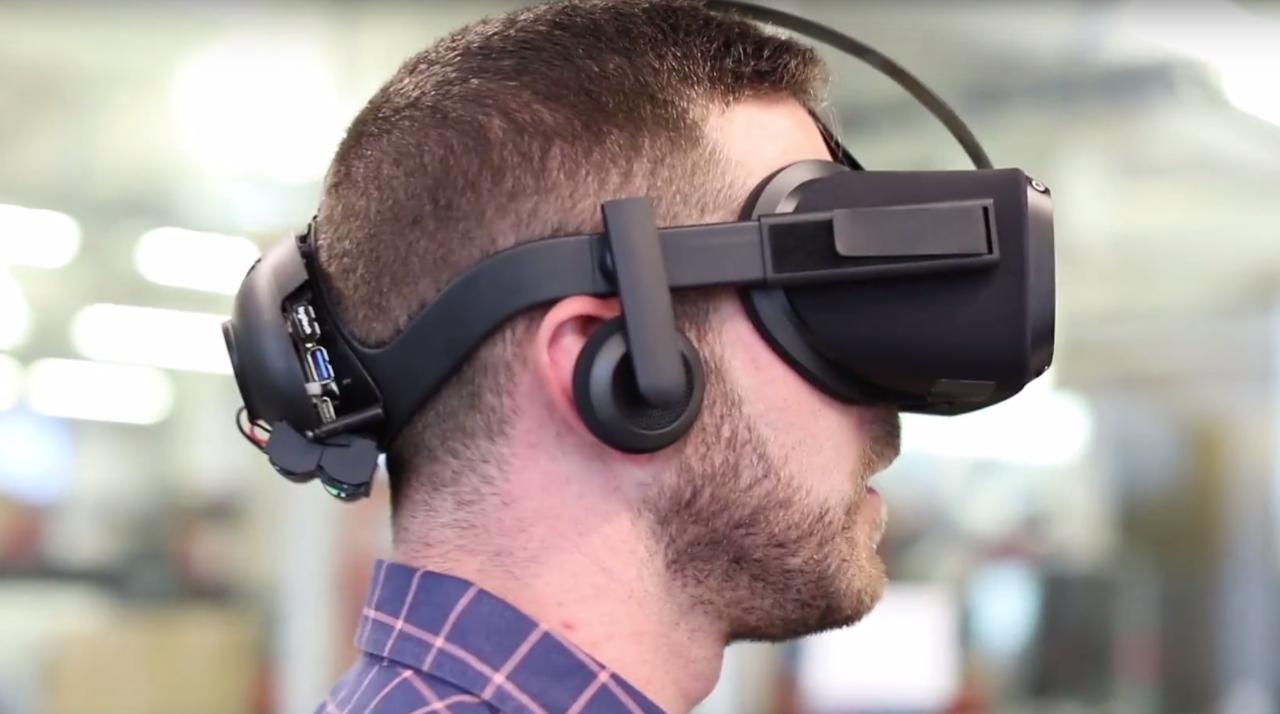We Tried Oculus' Wireless Santa Cruz Prototype VR Headset
Santa Cruz prototype offers wireless VR with positional tracking.
While Oculus’ wireless prototype headset, codenamed Santa Cruz, is still in its early prototyping stages, I just had a chance to demo it for three minutes. Facebook founder Mark Zuckerberg unveiled the HMD during the company’s Oculus Connect 3 keynote. The device isn’t just exciting because it’s wireless, but because it supports positional tracking. In essence, it combines the strengths of mobile and desktop VR together in one device.
Oculus didn’t allow me to take any photos of the Santa Cruz prototype. As a matter of fact, the company didn’t let me touch the headset with my hands; rather, a handler had to put it on me.

Oculus isn’t saying what components the device is using as of yet, other than the fact that it’s using a mobile system-on-a-chip. The HMD looks more like the Oculus Rift as opposed to Samsung’s Gear VR. It didn’t feel too heavy despite having what appears to be a hefty battery pack anchored onto the back of the headset.
Because this is a prototype, the weight is subject to change. What really makes the device unique is that it has four cameras on the front, one at each corner of the display. These cameras allow Santa Cruz to do what Oculus calls inside-out tracking to get positional data. Rather than using an external camera or sensor, it essentially uses these embedded cameras to process depth similar to our eyes.
The VR demo itself starts off in some sort of empty space station, then the scene transitions to a busy, cartoonish metropolis. This scene aesthetically looks a lot like Oculus’ early fox campfire demo with its low polygonal models. The city is surrounded by trees and not much happens in this demo with the exception of a few cars and clouds flying by.The demo then transports me to a balcony within the city and allowed me to walk around and peer down at the town below. The visuals looked more like mobile graphics as opposed to powerful desktop visuals, but what really made it interesting was the ability to lean into objects with the headset’s positional tracking capabilities. This is something traditional mobile VR solutions like Gear VR currently do not offer. The room that I was in measured roughly 10x14 feet, and my virtual movements corresponded appropriately to my real-life physical ones. To ensure that I didn’t bump into walls, there was a Chaperone-like grid system, which appeared as I got closer to walls.
While Oculus is still just prototyping the device and doesn’t have it on any consumer road maps, it’s good to know that wireless VR with positional tracking is on the company’s horizon.
Got a news tip or want to contact us directly? Email news@gamespot.com
Join the conversation